#yogic practices
Explore tagged Tumblr posts
Text
Yoga-Based Counseling: Integrating Ancient Wisdom and Modern Psychology
Yoga-Based Counseling: Integrating Ancient Wisdom and Modern Psychology Introduction: Yoga, renowned for its therapeutic benefits in physical, mental, and spiritual well-being, has gained recognition as a powerful tool for counseling. While the practical aspects of yoga such as asana, pranayama, and meditation are well-explored, the counseling part of yoga therapy has its roots in ancient…

View On WordPress
#Acupuncture#ancient texts#annabackacupuncture#counseling practices#holistic well-being.#integration#malibu#ogden#palos verdes#psychoeducation#san pedro#south shores#theoretical foundations#therapeutic benefits#wellness#Yoga-based Counseling#yogic practices
0 notes
Text
I will preach this until I am gone from this earth. There is no way to completely rid oneself of one or the other. Balance is the only answer. In my Yogic path I will strive to balance the light and dark within myself and with that find peace and acceptance of self. 🖤🤍
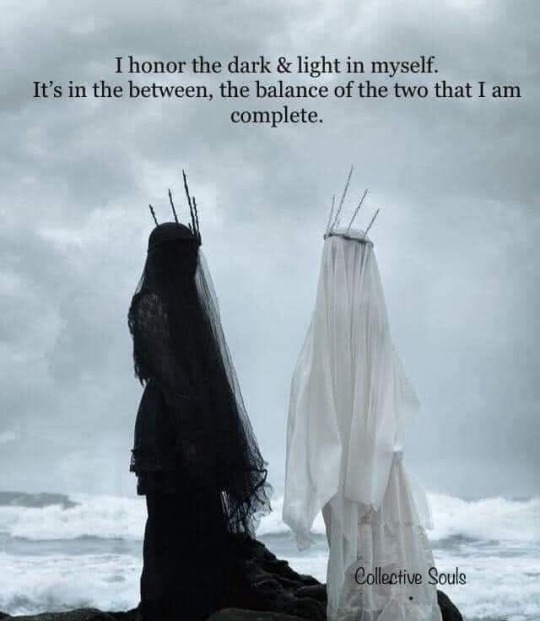
#balance#witchblr#witchcraft#witch community#witchy#witchyvibes#witchlife#witch tips#spiritual#magic#witch#yogiclife#yogicommunity#yogic#spiritual community#spiritual practices#spiritualism#spiritual journey#spiritualgrowth#spiritualpath#spiritual awakening#spirituality#spiritual knowledge#spiritual awareness#spiritualhealing#spiritual vibrations#light and darkness#light and shadow
107 notes
·
View notes
Text

Mahmoud Darwish
#mahmoud darwish#palestine#also perfectly sums up the distinction between jnana and bhakti approaches to yogic practice
11 notes
·
View notes
Text
Embracing the Shadow:
The Role of Shadow Work in Tantra In the path of Tantra, understanding and integrating all parts of ourselves, including those we might prefer to ignore or hide, is vital. This process, known as shadow work, involves confronting and embracing our shadow selves—the aspects of our personality that contain repressed or denied parts due to societal norms, upbringing, or personal challenges. By doing…
#Carl Jung#dialogue with shadow#embracing the shadow#energy healing#healing through Tantra#inner work#integration#journaling#meditation#meditative reflection#mindfulness#personal growth#personal transformation#psychological growth#repressed self#self-acceptance#self-awareness#self-compassion#self-discovery#shadow integration#shadow self#shadow techniques#shadow work#spiritual growth#spirituality#Tantra#Tantra practices#Tantra shadow work#unconscious mind#yogic body scans
0 notes
Text
Neti Neti Series No. 10: Harmonizing Breath, Mantra, and Movement for Deeper Meditation
Question: During my practice, I experimented with integrating the breath and the mantra with yogic movements while in a lotus posture. I coordinated the mantra and breathing with specific neck movements—turning my head left and right, extending and flexing my neck, and bringing my ear to my shoulder on each side. How might this combination of breath, mantra, and movement deepen my practice, and…
#Advaita Vedanta#breath coordination#Breathwork#consciousness#ego dissolution#holistic practice#inner awareness#Inner peace#Mantra Meditation#Meditation practice#meditation techniques#Meditation Tips#mental clarity#Mind-body connection#Mindfulness#Neti Neti#physical awareness#self-inquiry#Self-Realization#Spiritual Awakening#spiritual growth#Spiritual Insight#Spiritual Practice#Stress relief#yoga and meditation#yogic movements
0 notes
Text
The Yogic Anatomy of the Koshas: The Anandamaya Kosha and Deep Rest
The time we spend in the Anandamaya Kosha is a time of deep rest for all aspects of our being.
The Anandamaya Kosha, the subtlest of the koshas, bodies, sheaths, or dimensions is commonly translated as the “Bliss Body” . Commonly is an important adverb here – as “nanda” is joy in form and “a” is often creates an opposite. So, bliss, yes, but bliss beyond form. For starters we may want to distinguish between the state of ecstasy that can be achieved by high vibing our practices through…

View On WordPress
#Anandamaya Kosha#asana#Deep rest#koshas#meditation#Muktibodananda#Personal Yoga Practice#yoga#yoga healing#Yogic Anatomy
1 note
·
View note
Text
Top Benefits of Bhujangasana (Cobra Pose) | How to Perform Bhujangasana (Cobra Pose)?
Introduction – Top 8 Benefits of Bhujangasana | How to Perform Bhujangasana? Bhujangasana, commonly known as Cobra Pose, is a foundational yoga posture that derives its name from the Sanskrit words “bhujanga,” meaning serpent or cobra, and “asana,” meaning pose. This asana is widely practiced for its multitude of physical and mental benefits, making it a popular choice for yogis of various…

View On WordPress
#advance variations of bhujangasana#how to perform bhujangasana#the yogic philosophy of the bhujangasana#top benefits of bhujangasana#which chakra is activated by practicing bhujangasana
0 notes
Text
seeing oomfs (not even on here but on twt too) shit on my beliefs makes me so sad :( obviously not everyone has to believe in the same stuff but i’d like to imagine ppl would be respectful at least
#buddhists and yogis don’t really have a lot of science backing them up#but when something has hundreds of years worth of results#why question someone for believing in it#plus the reason there is not scientific evidence is because they only really began studying buddhist and yogic practices in like the 70s
0 notes
Text
How to increase your intuitive powers? ✨️
Here are some tips for enhancing your intuition :
Try Meditation
And Yogic meditation too
Let your creative energy flow
Spending time in nature
Eat a healthy diet.
Cleanse your energy by salt water bath ritual
Light incense in your house to remove past energy
Think positively or be optimistic
Spend time with your friends
Stop using energy draining apps like instagram or twitter or tiktok too much.
Don't be on your phone all the time.
Trust yourself. Believe in yourself.
Have a healthy and regular sleep schedule.
Use crystals
Do self care
Do shadow work
Remove negative people or energy vampires from your life.
Trust in god/divine/universe or whatever you believe in.
Don't spread hate for others, be kind.
Do breathing exercises (Breathing yoga exercises are the best spiritually)
Spend time doing your favorite things or hobbies like art, music, cooking etc.
Calm down your cognitive mind.
Trust your gut feelings, don't ignore it.
Practice mindfulness while doing small and usual activities like walking, talking, chopping carrots etc.
#tarot reading#tarot blog#tarot cards#tarot#tarot and astrology#pick a card#pick a pile#tarot asks#tarot community#tarotblr#tarot tips#tarot tumblr#tarot spread#intuition#intuitive
380 notes
·
View notes
Text


Sadhu Shiva 🔱 Talon Abraxas Sadhu Shiva, often depicted in a serene and meditative state, represents the ascetic and yogic aspect of Lord Shiva. As Sadhu Shiva, he embodies the ideal of renunciation and spiritual discipline. Here are some key aspects:
1. Ascetic Life: Sadhu Shiva lives a life of renunciation, detached from worldly pleasures and material possessions. He is often depicted wearing simple attire, usually a loincloth, and smeared with ash from cremation grounds, symbolizing the impermanence of life and the transcendence of the physical body.
2. Meditation: In this form, Shiva is depicted as deeply immersed in meditation, often seated in the lotus position (Padmasana). His meditative state signifies inner peace, self-control, and the pursuit of spiritual enlightenment.
3. Symbolism: - Trishula (Trident): Represents his control over the three aspects of time: past, present, and future. - Damaru (Drum): Symbolizes the cosmic sound and rhythm of the universe. - Serpents: Denote the mastery over ego and the cycle of rebirth. - Crescent Moon: Signifies the cyclical nature of time and his eternal existence.
4. Mount Kailash: Sadhu Shiva is often associated with Mount Kailash, considered his heavenly abode. This sacred mountain symbolizes the axis of the world and the ultimate destination for spiritual seekers.
5. Austere Practices: Sadhu Shiva practices severe austerities and penances, demonstrating his commitment to spiritual growth and the pursuit of higher consciousness. His lifestyle inspires devotees to lead a life of simplicity, devotion, and discipline.
44 notes
·
View notes
Note
I've been following your Heretic updates and I've been wondering, are the Hours akin to forces of nature - or they beings with desires and fears that are simply too alien for humans to comprehend?
They are beings with desires and fears that are for the most part completely comprehensible. Mother White is the only alien one. They are also forces of nature. The Hours are the aeonic powers that hold the universe together, and maintain an order in which life and the pursuit of apotheosis are possible. Their passions, rages, promises and burdens configure and power the architecture of the universe.
You know what, let's actually run through them.
The Madrugad (the First Hour) is the Hour of the Passage. She ensures that one side of a doorway connects to the other. She also presides over the passage from life to death (and back, if she allows it). She is invoked for summonings and resurrection magic. She attends the Sun-In-Rags in hospice, preventing him from passing into death. She is remote and solemn but broadly benevolent, though not necessarily generous.
The Queen-In-Chains (the Second Hour) is the Prophet's Hour. She presides over all causality and the organization of time. She is completely insane, but probably knows everything, and can act with searing and bewildering precision when she launches some petitioner on a called shot through the butterfly effect.
The Stranger (the Third Hour) is the Hour of Deception. She presides over everything that is unknown, and protects the secrecy of everything which should remain unknown. She's one of the three gods of the Wood, and is generally a real jerk. Trickster gods are almost universally manifestations of the Stranger. Her sister is the Ring-Yew, and the pair generally cooperate when called upon to do so. She is engaged in a friendly rivalry with the Black Captain.
The Rending (the Fourth Hour) is the Hour of Annihilation. He is the destroyer. Rage, cruelty, and pestilence are his offices. He wants to hurt you before you die. He loves the Sunflower King, and inflicts endless torments upon him to express his love. Doesn't really have a bone to pick with any particular other Hour. He intends to kill them all equally.
The Kithmark (the Fifth Hour) is the Hour of the Inner Reach. He maintains the boundary between 'you' and everything that is not 'you.' A lot of yogic practices get into Kithmark veneration. Mostly keeps to himself but if you end up fucking around in Idless at all you'll probably become a big fan of him. He is working very hard all the time to prevent you from being colonized by invading intelligences.
The Pyre-Hawk (the Sixth Hour) is the Hour of Exultation. His office is purification and ascension. He's absolutely 100% of the time in a state of ecstatic joy, and you will be too, if you pursue his favor for long enough! Nobody has beef with the Pyre-Hawk. He's the life of the party and we're all thrilled he's here.
The Sunflower King (the Seventh Hour) is the Hour of Triumph. It is by his will that your will has the power to reshape the world around you. Even the physical laws of the universe give way before the will of the Sunflower King. Proud and resplendent, haughty and flensing, in his kingly greatness he submits to be Rended to spare all of creation from facing the same scourge. The most beloved of the Hours for the greatness of his sacrifice. The Madderblade is his guardian and knight. All hail.
The Madderblade (the Eighth Hour) is the Hour of Conquest & Reconciliation. The fusion and fission of every atom in the universe are only the echoes of her towering victories in both love and violence. She is glorious. She is always serving. She is the first force that ever slew an Hour. Her blade bit the heart of Mother White. The Black Captain wants to fuck her so bad it makes him look stupid. She loves him too. They've been in a state of relentless war ever since acknowledging their passion, to prevent themselves from committing the calamitous Sin of the Sky.
The Bent Minstrel (the Ninth Hour) is dead, which is very bad. He was the second of the three gods of the Wood, and presided over the movement of nature. People who know about this sort of thing generally speak well of his memory, although often in the same way that they call the fairies "the good neighbors." Wild Hunts and horned gods aside, he was the right Hour to pray to if you wanted your harvests to be plentiful and the weather to be good. He also inspired art & music, which he perceived to be just more manifestations of the weather. Mother White ate him.
The Ring-Yew (the Tenth Hour) is the Merciful Hour. Every lucky break you've ever gotten when the chips were down was thanks to her. She is the particular protector of children, prisoners, slaves, martyrs, animals, and the lost. She is the third god of the Wood, and by far the nicest one. Fortunate is he who glimpses the edge of her silver hand in his moment of despair, because a path to peace and freedom is about to open up before him. She is completely incapable of any kind of violence.
Mother White (the Eleventh Hour) is the Hour of Vibrance. Hers is the vital force which allows life to multiply and which reanimates the dead. She is constantly hungry and has no other motivation that anyone has ever been able to determine before she ate them. It's hard to even tell if she communicates, or if she's just mimicking communication in order to entice you to come close enough that she can get her jaws around you. She's an awful grub and probably unkillable, but who knows what she'd pupate into if she could ever get enough to eat? Maybe something that wouldn't be so alien and dangerous.
The Stone Beggar (the Twelfth Hour) is also dead, but it seems unlikely that he'll stay that way. He was the Hour of Inevitability, and presided over the turning wheel. His name is still invoked by revolutionaries, and cursed by those who would try to cling to power beyond their appointed time. It is thanks to his kindness and to his cruel indifference that the wheel always turns. He was noble, quiet, and implacable in war. Mother White ate him too.
The Uranian (the Thirteenth Hour) is the Hour of Daring. Alone out of all the Hours, he was once a mortal man. His offices are magic and the movement of the spheres. Kind of a dick tbh, very into backstabbing your way to the top. The kind of guy who would actually say "don't hate the player, hate the game."
The Black Captain (the Fourteenth Hour) is the Hour of Satisfaction. It is by his will that oaths, vengeance, and victory hold power. He used to be the greatest of the stalking kings of Mithra, before the Madrugad summoned him into mundus to defend her domicile (in which the Sun-In-Rags takes sanctuary) from the ravages of Mother White, during the War of Intercalation. Dutiful, cunning, ruthless, and skillful. He's the sink to the Madderblade's source, you know? The Romans were really into him.
Those are all the currently seated Hours. There are more beings you can petition: like the Ecdysiast, the Wakefire, the Flayed Widow, and the Hanged Rider, all of whom were killed during the War of Intercalation and their Thrones have subsequently been taken by others (the Madderblade, the Pyre-Hawk, the Uranian, and the Black Captain, respectively). There are also Great Leviathan and the First Ant, neither of whom have ever been Hours, but are sufficiently titanic beings that they have a lot in common with the Hours. But you get the idea. They're not incomprehensible at all, except for Mother White.
73 notes
·
View notes
Text
Happy International Yoga Day!

Today we celebrate the ancient practice of yoga, which has been a cornerstone of Indian culture for over 5,000 years. We honor the "Father of Modern Yoga," Tirumalai Krishnamacharya (1888-1989), who played a crucial role in popularizing yoga worldwide. We also honor the original "Father of Yoga," Patanjali, who authored the celebrated yoga sutras.
_History of Yoga:_
Yoga has its roots in the Indus Valley Civilization, with evidence of yoga practices dating back to 3000 BCE. The word "yoga" comes from the Sanskrit word "yuj" meaning "to unite." Over time, yoga evolved through various traditions, including Hatha Yoga, Raja Yoga, and Bhakti Yoga.
Patanjali:
Patanjali was a Hindu author, mystic, and philosopher who authored the Yoga Sutras, a categorization of yogic thought arranged in four volumes. He is regarded as an avatar of Adi Sesha and is believed to have lived between the 2nd century BCE and the 5th century CE ¹.
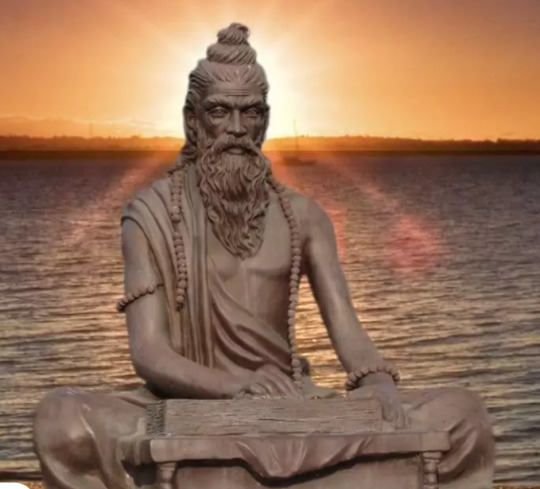
Tirumalai Krishnamacharya:
Born in 1888, Krishnamacharya was a Indian yoga master, ayurvedic healer, and scholar. He studied yoga under his father and later under the revered yoga guru, Rama Mohan Brahmachari. Krishnamacharya went on to teach yoga to prominent students, including B.K.S. Iyengar, K. Pattabhi Jois, and Indra Devi, who spread yoga globally.
BENEFITS OF YOGA
Yoga offers numerous benefits, including:
- Improved flexibility and strength
- Reduced stress and anxiety
- Enhanced mental clarity and focus
- Improved overall well-being
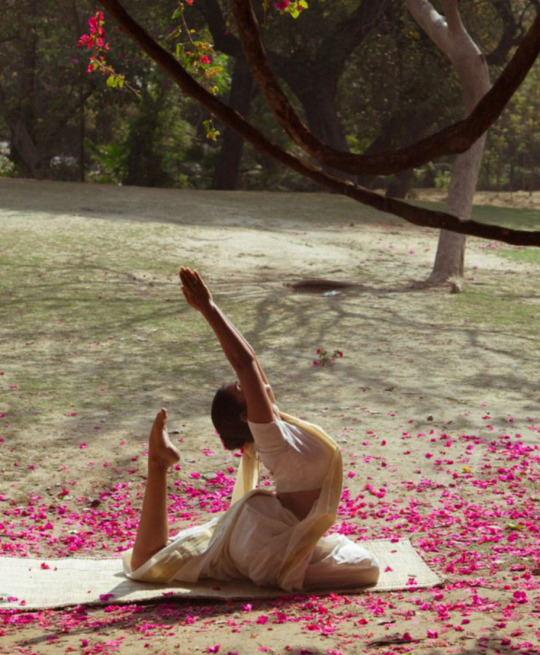
Popular Yoga Asanas:
1. Downward-Facing Dog (Adho Mukha Svanasana)
2. Warrior Pose (Virabhadrasana)
3. Triangle Pose (Trikonasana)
4. Seated Forward Fold (Paschimottanasana)
5. Tree Pose (Vrksasana)
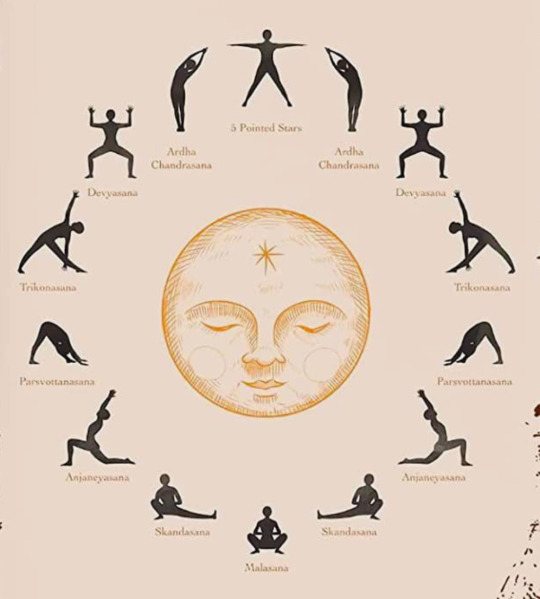
#InternationalYogaDay#YogaForAll#desiblr#desi tumblr#desi girl#being desi#desi tag#desi aesthetic#yoga#indian culture#health and wellness#desi#international yoga day#hinduism#hindublr
45 notes
·
View notes
Text
"The closer we are to Self-realization, or enlightenment, the more ordinary we become. Only seekers striving for liberation as if it were a trophy glamorize the yogic process and themselves. They want to be extraordinary, whereas liberated beings are perfectly ordinary. They are as happy washing dishes as they are sitting quietly in meditation or teaching their disciples. For this reason, Yoga has from the beginning celebrated not only the path of the world-renouncing ascetic (samnyāsin) but also that of the world-engaging householder (grihastha) who uses the opportunities of daily life to practice the virtues of a yogic lifestyle."
— Georg Feuerstein
36 notes
·
View notes
Text
Post 4: Understanding the Five Types of Mental Fluctuations: Patanjali’s Sutras 1.5 and 1.6
In our previous post, we reflected on the profound distinction between the Seer and the fluctuations of the mind, as described in Sutras 1.3 and 1.4. Patanjali taught us that when the mind is still, the Seer abides in its true nature. When the mind is not still, we identify with the fluctuations, creating a misperception of reality. This realization is crucial for the practice of yoga, as it…
#calming the mind#clarity of mind#distinguishing Seer from mind#five types of vrittis#imagination and mind#Inner stillness#memory and yoga#mental fluctuations in yoga#mental modifications#mental peace through yoga#mind-body balance#observing thoughts#Patanjali Sutra 1.5#Patanjali Sutra 1.6#path to liberation#Raja Yoga#right knowledge in yoga#Self-awareness#sleep as a mental fluctuation#Spiritual Practice#Swami Vivekananda translation#vrittis and suffering#wrong knowledge in yoga#Yoga Sutras of Patanjali#yogic insight#yogic philosophy#yogic wisdom
1 note
·
View note
Note
Really seems like ancient India was on some of the same shit as rationalism. Like, veganism/vegetarianism, a lot of body modding interconnected with yogic practices which can kind of collectively be viewed as a sort of Iron Age transhumanism... crazy meditation stuff, which is very "brain" (rationalism is very brain; rationalists love brain). I think there's something real here. Not Yudkowsky cluster rationalism more like Ziz cluster rationalism. They were on some rationalist, nootropics guy, you know, brain shit thousands of years ago in India.
HMMM. the early greek wacky magician-philosophers were also into vegetarianism, for the same reincarnation reason. got weird meditation stuff too in greece. the body modification does seem to be unique to india though
25 notes
·
View notes
Text
9 Top Benefits of Ustrasana | How to Perform Ustrasana – A Step-By-Step Instructions of Camel Pose
#ustrasana #camelpose #yoga #yogapractice #backbend #yogainspiration #yogachallenge #yogateacher #yogalife #yogaeveryday #yogaeverydamnday #heartopener #yogagirl #camelposevariation #yogalove #asana #yogaeverywhere #yogapose #yogi #yogini #yogaposes
Introduction – 9 Top Benefits of Ustrasana | How to Perform Ustrasana – A Step-By-Step Instructions of Camel Pose Ustrasana, commonly known as Camel Pose, is a dynamic and heart-opening yoga posture that embodies grace, strength, and flexibility. The name “Ustrasana” is derived from the Sanskrit words “ustra,” meaning camel, and “asana,” representing a yoga pose or posture. This asana is…
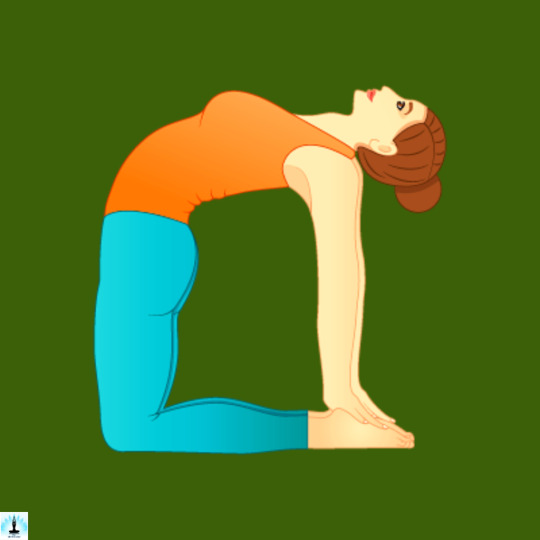
View On WordPress
#how to perform ustrasana#step-by-step instructions of ustrasana#the yogic philosophy of the ustrasana#top benefits of ustrasana#which chakra is activated by practicing ustrasana
0 notes